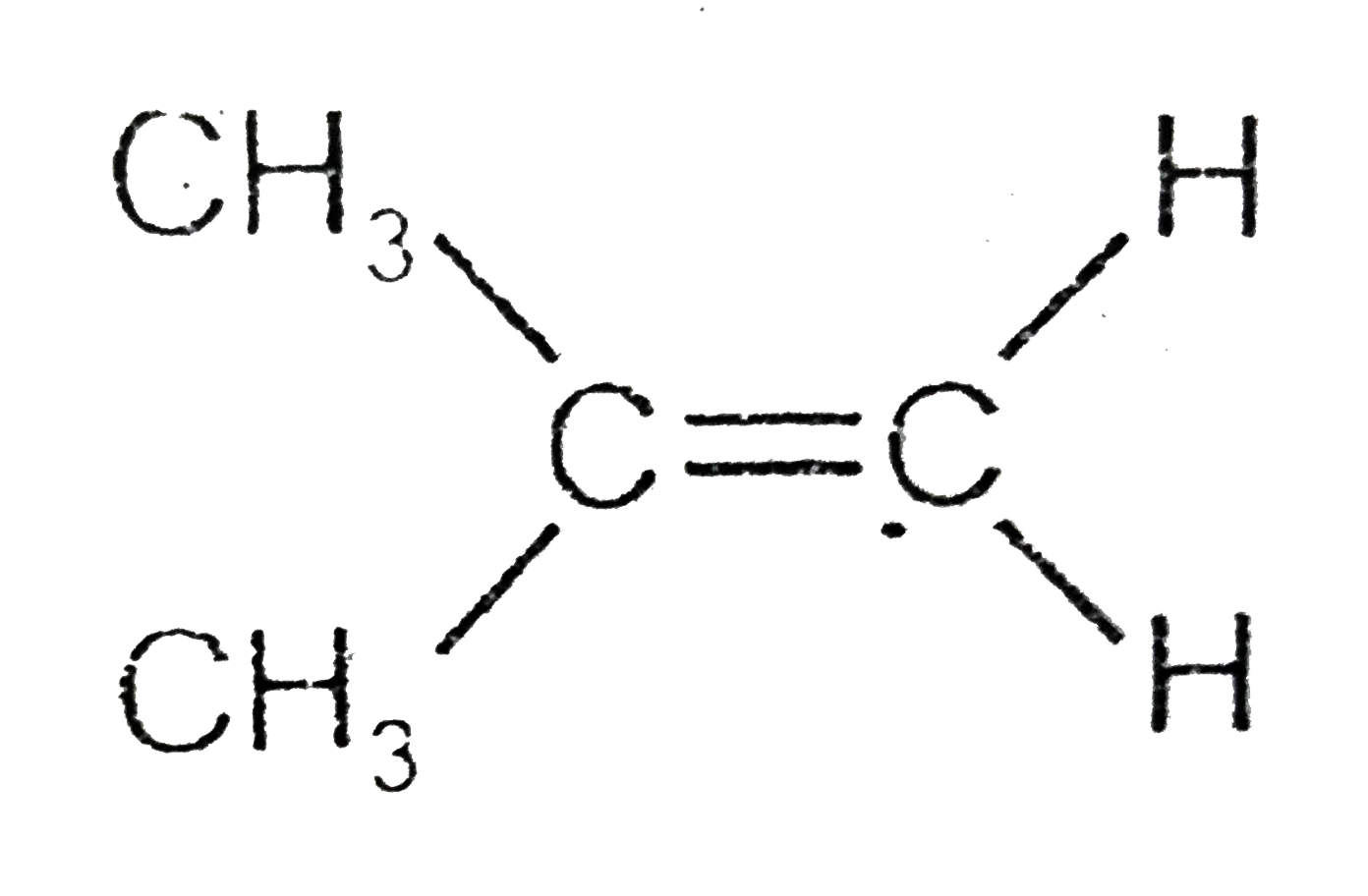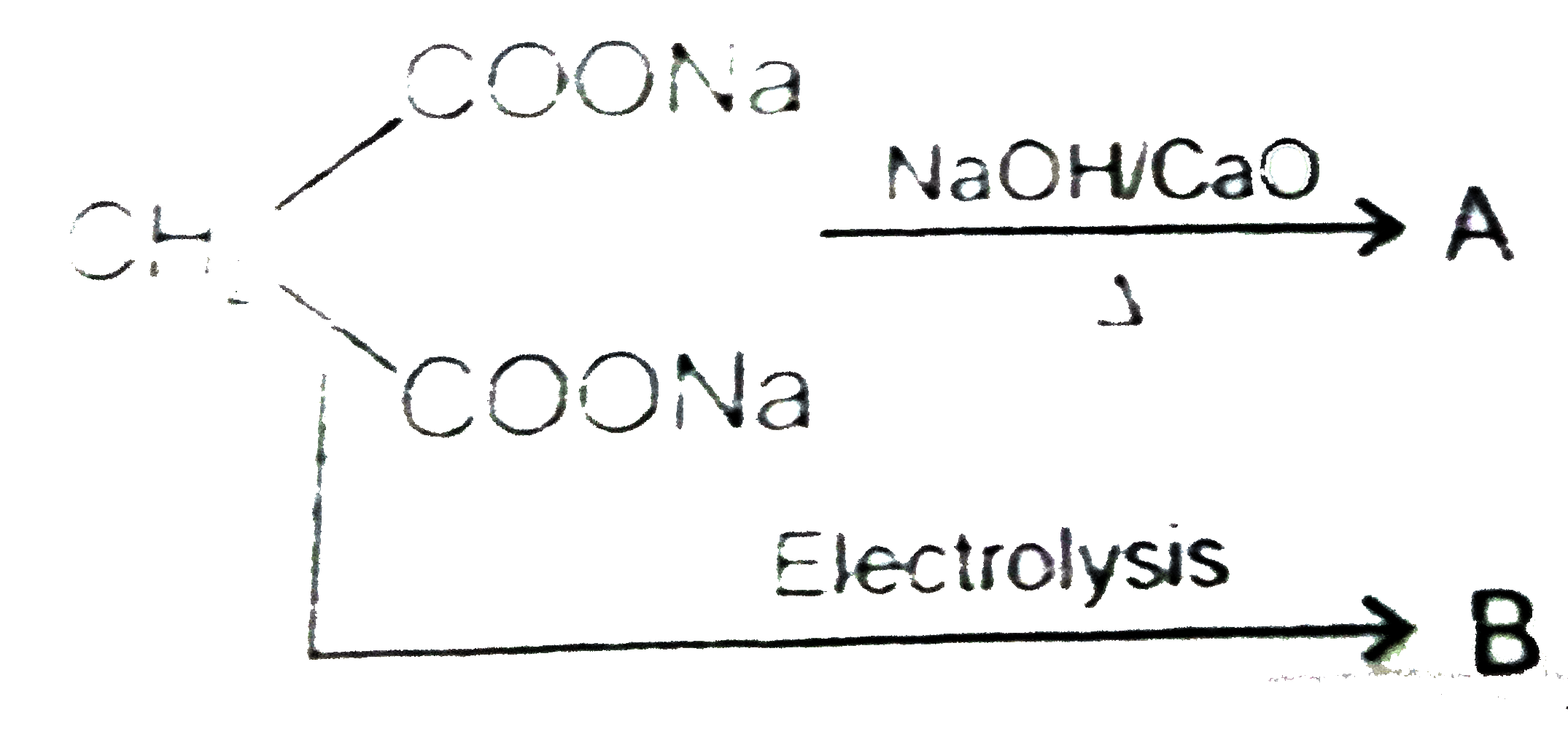Markovnikov rule is applicable to
CH2=CH2
CH3−CH2−CH3
CH3−CH=CH−CH3

The correct Answer is:D
Step by step video, text & image solution for Markovnikov rule is applicable to by Chemistry experts to help you in doubts & scoring excellent marks in Class 12 exams.
Topper's Solved these Questions
- BOOK - AAKASH INSTITUTECHAPTER - HYDROCARBONSEXERCISE - SECTION-B OBJECTIVE TYPE QUESTIONS (ONE OPTION IS CORRECT)25videos
HYDROCARBONS
- BOOK - AAKASH INSTITUTECHAPTER - HYDROCARBONSEXERCISE - SECTION-C OBJECTIVE TYPE QUESTIONS (MORE THAN ONE OPTIONS ARE CORRECT)12videos
HYDROCARBONS
- BOOK - AAKASH INSTITUTECHAPTER - HYDROCARBONSEXERCISE - ADDITIONAL INFORMATION3videos
HYDROCARBONS
- BOOK - AAKASH INSTITUTECHAPTER - HALOALKANES AND HALOARENES EXERCISE - ASSIGNMENT SECTION -D15videos
HALOALKANES AND HALOARENES
- BOOK - AAKASH INSTITUTECHAPTER - HYDROGENEXERCISE - ASSIGNMENT (SECTION - D) (Assertion-Reason Type question)15videos
HYDROGEN
Similar Questions
Minimum number of carbon atoms required for an alkane to show any kind of isomerism.
03:05View SolutionWhich of the folloiwng alkanes will give more than one monochloro product?
01:58View SolutionComplete the following reaction
 02:11View Solution
02:11View SolutionIn the following questions, a statement of assertion (A) is following by a statement of reason (R )
A : when chloroform is obtained from bleaching powder and ethanol then chlorine acts as oxidising agent only.
R : It oxidises ethanol into acetic acid.03:59View SolutionA : ScH2 is an example of ionic hydride.
R : All metal forms ionic hydride.05:41View SolutionMarkownikoff rule is best applicable to
04:20View SolutionThe Markovnikov rule is best applicable to the reaction between
03:00View Solutionहेस नियम निम्नलिखित का अनुप्रयोग है-
34:09View SolutionThe alkenes have π-bonds which make them highly reactive. These undergo electrophilic addition reactions, Addition of HX to unsymmetrical alkenes gives two products and follow Markovnikov rule and anti- Markovnikov rule. The addition occure through the formation of carbocation in Markovnikov rule and free radicals in anti-Markovnikov zule. The ozonolysis reaction of alkenes helps to locate the position of double bond.
Predict the major product in the following reaction:
CH3−CH=CH2HBr−−−−−−→(PhCOO)202:59View SolutionThe alkenes have pi -bonds which make them highly reactive. These undergo electrophilic addition reactions, Addition of HX to unsymmetrical alkenes gives two products and follow Markovnikov rule and anti- Markovnikov rule. The addition occure through the formation of carbocation in Markovnikov rule and free radicals in anti-Markovnikov zule. The ozonolysis reaction of alkenes helps to locate the position of double bond. Write the major product in the following reaction: CH_(3)- overset(CH_(3))overset(|)CH-CH=CH_(2) overset(HBr)to
02:45View SolutionThe alkenes have pi -bonds which make them highly reactive. These undergo electrophilic addition reactions, Addition of HX to unsymmetrical alkenes gives two products and follow Markovnikov rule and anti- Markovnikov rule. The addition occure through the formation of carbocation in Markovnikov rule and free radicals in anti-Markovnikov zule. The ozonolysis reaction of alkenes helps to locate the position of double bond. What product is obtained when propene reacts with CI_(2) in the presence of water?
40:01View SolutionThe alkenes have pi -bonds which make them highly reactive. These undergo electrophilic addition reactions, Addition of HX to unsymmetrical alkenes gives two products and follow Markovnikov rule and anti- Markovnikov rule. The addition occure through the formation of carbocation in Markovnikov rule and free radicals in anti-Markovnikov zule. The ozonolysis reaction of alkenes helps to locate the position of double bond. Name the products formed when 2-methylpropene is treated with ozone followed by Zn, H_(2)O .
43:05View SolutionApplication Writing | How To Write An Application | Rules | Format
36:57View SolutionChargaff rule is not applicable to
51:31View SolutionMarkovnikov addition takes place with unsymmetrical alkenes. The positive part of the reagent gets connected to the double bonded carbon with more number of hydrogens. In presence of peroxide and in special cases addition takes place against Markovnikov rule.
In which of the following compound addition takes place against Markovnikov rule01:13:26View Solution

